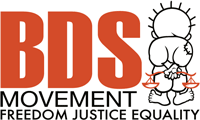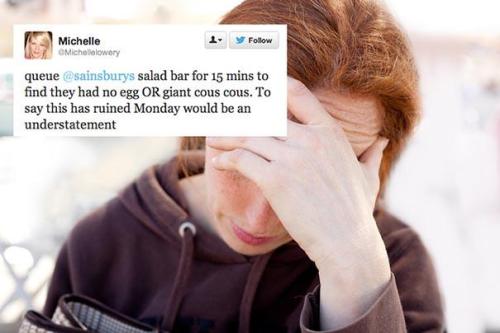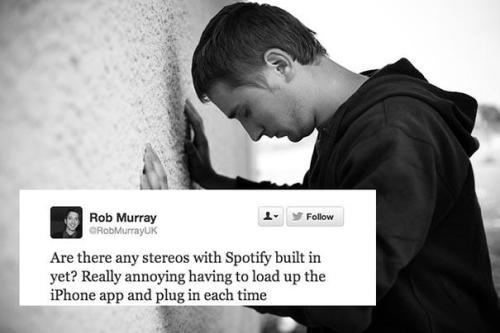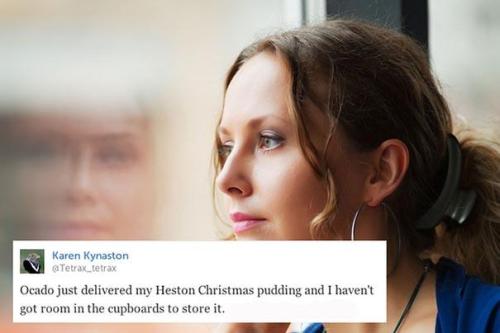Dear Toto
January 31, 2014
Digital Matatus
by Pádraic
A collaborative research and mapping initiative is working toward standardising and opening transit data for Nairobi’s matatus — the informal and de facto city bus system — and expanding their findings, tools, and processes globally. Building on past Kenyan-based digital mapping efforts and open source transit software, the group will produce a comprehensive framework for collecting, opening and mapping Matatu transportation data toward a mobile and equitable Nairobi.
Currently underway, a primary round of data collection and local student design workshops are growing the understanding of this otherwise misunderstood and complex system. The first series of tools will be entering development this spring to improve on data collection and transport information management in the decentralized Matatu system. This project uses Nairobi’s active mobile phone community to develop a standardized Matatu bus route for Nairobi informal buses. By developing crowd-sourcing applications we hope people in Nairobi can develop, contribute, maintain and own their own transit information.
January 30, 2014
Back on the Agenda
by Pádraic
Former Welsh Secretary and Middle East minister at the Foreign Office to use speech to ask whether Israel should ‘seek a settlement legislating for the rights of Palestinians and Arab-Israelis within a new common state’
via Wales Online
Peter Hain will make a major speech tonight in which he will warn that the long-term goal of a two-state peace deal between Israel and the Palestinians may no longer be achievable and claim that a one-state solution is now “back on the agenda”.
The former Welsh Secretary and Middle East minister at the Foreign Office will not endorse calls for the creation of a binational state but will ask: “Instead of living in constant fear of the enemy within as well as without, might it be more fruitful for Israel to seek a settlement legislating for the rights of Palestinians and Arab-Israelis within a new common state to end the conflict?”
In a public lecture at Swansea University, the Neath MP will state that he has favoured a two-state solution but is “increasingly unsure about whether it’s still achievable” because “the land earmarked for a viable Palestinian state has been remorselessly occupied by Israeli settlers.”
Claiming that support is growing for a single state, he will say: “Palestinians on both sides are now questioning the two-state strategy to an even greater degree. Negotiations have so far failed, as has a reliance on the US to deliver Israeli cooperation.
“The two-state option was itself originally conceived as a compromise and one likely to be particularly painful for the Palestinian refugee community. All of which explains why in academic and activist circles the one-state option is back on the agenda.
“There are now a number of different campaigns for the creation of a single democratic, secular state for Jews and Arabs, made up of Israel, Gaza and the West Bank.”
Mr Hain, who as Northern Ireland Secretary played a key role in bringing Ian Paisley’s DUP and Sinn Fein together in the Stormont executive, will argue: “[If] Israel’s relentless expansion into Palestinian territories cannot be stopped then we must face one of two possible outcomes.
“The first is that all Palestinian presence in the West Bank and East Jerusalem remains in a permanent and ever-more formalized ‘Bantustan status’, islands of minimal self-governance with the continued denial of basic rights, facing ongoing pressure, perpetual insecurity and possible future physical removal.
“The second is that they are absorbed into a common Israeli-Palestinian state with the opportunity for pluralism and human rights advancement.
“Is that solution now the only one capable of stopping the cycle of violence and preserving Israel’s potential to become a force for unity and peace, instead of a beleaguered source of division and a target for attack?
“And if the window for the two-state solution is indeed closing, then should the EU, the US and the UK make it plain to Israel that a one-state alternative may be the only one available to ensure its security?”
He will ask what type of state would be “politically feasible and deliverable,” stating: “Could a federal or con-federal state provide a way forward, with common security, a unified economy, common civil rights and guarantees of religious freedom for Jews and Muslims, but considerable political autonomy for the territories within it of ‘Israel’ and ‘Palestine’? How then might Israeli and Palestinian security forces be integrated?
“These are fundamental, difficult and complex questions – but, if successfully answered, could a common state solution more easily resolve the deadlock than the two-state solution I and many others have long-favoured?
“I remain uncertain. But I ask because I do not see how either the Israelis or the Palestinians can secure their legitimate objectives by perpetuating for still more decades their unsustainable and unstable predicament, with a two-state solution slipping away while violence and terrorism lurks constantly.”
Mr Hain’s speech comes days after Prime Minister Binyamin Netanyahu pressed for a demilitarised Palestinian state that recognizes a Jewish state of Israel, saying: “The solution is a demilitarized Palestinian state that recognizes Israel as the Jewish state. That is the only solution that will work.”
US Secretary of State John Kerry is expected to imminently present the key concessions he believes each side must make in order to secure a peace deal. Palestinian Authority President Mahmoud Abbas has reportedly said he is willing to accept an Israeli military presence in the West Bank for a three-year transition period.
January 30, 2014
ScarJo quits Oxfam
by Pádraic
 The Associated Press has reported that Scarlett Johansson is “ending her relationship with a humanitarian group after being criticised over her support for an Israeli company [SodaStream] that operates in the West Bank.”
The Associated Press has reported that Scarlett Johansson is “ending her relationship with a humanitarian group after being criticised over her support for an Israeli company [SodaStream] that operates in the West Bank.”
AP adds:
A statement released by Johansson’s spokesman Wednesday said the 29-year-old actress has “a fundamental difference of opinion” with Oxfam International because the humanitarian group opposes all trade from Israeli settlements, saying they are illegal and deny Palestinian rights.
“Scarlett Johansson has respectfully decided to end her ambassador role with Oxfam after eight years,” the statement said. “She and Oxfam have a fundamental difference of opinion in regards to the boycott, divestment and sanctions movement. She is very proud of her accomplishments and fundraising efforts during her tenure with Oxfam.”
Oxfam has not yet commented on the news. Oxfam has not endorsed boycott, divestment and sanctions, although it opposes trade with Israeli settlements in the occupied West Bank.
Johansson’s move follows weeks of protest from Palestinians and solidarity groups, and near silence from Oxfam’s bitterly divided management.
The Electronic Intifada’s extensive reporting on this story can be found here.
January 29, 2014
Transformative
by Pádraic
Six-Day Visit To Rural African Village Completely Changes Woman’s Facebook Profile Picture
Calling the experience “completely transformative,” local 22-year-old Angela Fisher told reporters Tuesday that her six-day visit to the rural Malawian village of Neno has completely changed her profile picture on Facebook. “As soon as I walked into that dusty, remote town and the smiling children started coming up to me, I just knew my Facebook profile photo would change forever,” said Fisher, noting that she realized early in her nearly weeklong visit just how narrow and unworldly her previous Facebook profile photos had been. “I don’t think my profile photo will ever be the same, not after the experience of taking such incredible pictures with my arms around those small African children’s shoulders. Honestly, I can’t even imagine going back to my old Facebook photo of my roommate and I at an outdoor concert.” Since returning, Fisher said she has been encouraging every one of her friends to visit Africa, promising that it would change their Facebook profile photos as well.
January 28, 2014
Abuna Paolo
by Pádraic
‘Freedom for Abuna Paolo, freedom for all detainees in Syria’ is the demand that will be voiced in gatherings and prayer meetings in several cities, in Italy, Europe, and elsewhere. The announcement was made by members of the community that the Jesuit priest, Father Paolo Dall’Oglio, established in the Syrian monastery Deir Mar Musa.
The date set, January 29, marks six months since he disappeared in Syria. Dall’Oglio ”is being held in some part of Syria,” wrote his conferes in a statement, implying that they had evidence making them believe he is still alive. ”We are one of many Syrian and Iraqi families that suffer from the absence of one of our loved ones.” The gatherings (Rome, Milan, Bologna and Trento are among the cities they will be held in) have been organized to ”to say ‘freedom for Abuna Paolo, freedom for all Syrian detainees’,” the conferes wrote. ”We will bring portraits of Paolo and other detainees, we will read excerpts of his writings and we will share the hope of seeing him among us again soon. The protest is spiritual and humane, rather than political.” On Monday Italian Foreign Minister Emma Bonino said that no news had been received on Dall’Oglio or his whereabouts, despite hopes raised that more information might be forthcoming after the starting of the Geneva II talks. Events have been planned in Strasbourg, Paris, Grenoble, Le Mans, Lyons, Marseille and Montpellier in France; in Geneva, Brussels, Luxembourg, the Hague, Leeds and Berlin in Europe; beirut in Lebanon, Sulaymaniah in Iraqi Kurdistan, in Qatar and in Scranton (USA). The gathering in Rome will be held in the San Giuseppe church (Via Redi), the one in Milan in that of S. Fedele, in Bologna in the Madonna di Barraccano one and in Trento at the S.Chiara Gardens.
Some of Dall’Oglio’s community is still in Syria: eight confreres in the Mar Musa and Mar Elian monasteries (where about 400 people displaced by the war are also staying), three in Sulaymaniah in the Deir Maryam monastery, and two in Rome for the purpose of study.
via ANSAmed
January 24, 2014
A Culture of Encounter
by Pádraic
Pope Francis’ Message for World Communications Day 2014
Today we are living in a world which is growing ever “smaller” and where, as a result, it would seem to be easier for all of us to be neighbours. Developments in travel and communications technology are bringing us closer together and making us more connected, even as globalisation makes us increasingly interdependent. Nonetheless, divisions, which are sometimes quite deep, continue to exist within our human family.
On the global level we see a scandalous gap between the opulence of the wealthy and the utter destitution of the poor. Often we need only walk the streets of a city to see the contrast between people living on the street and the brilliant lights of the store windows. We have become so accustomed to these things that they no longer unsettle us. Our world suffers from many forms of exclusion, marginalization and poverty, to say nothing of conflicts born of a combination of economic, political, ideological, and, sadly, even religious motives.
In a world like this, media can help us to feel closer to one another, creating a sense of the unity of the human family which can in turn inspire solidarity and serious efforts to ensure a more dignified life for all. The walls which divide us can be broken down only if we are prepared to listen and learn from one another. We need to resolve our differences through forms of dialogue which help us grow in understanding and mutual respect.
A culture of encounter demands that we be ready not only to give, but also to receive. Media can help us greatly in this, especially nowadays, when the networks of human communication have made unprecedented advances. The internet, in particular, offers immense possibilities for encounter and solidarity.
This is not to say that certain problems do not exist. The speed with which information is communicated exceeds our capacity for reflection and judgement, and this does not make for more balanced and proper forms of self-expression. The variety of opinions being aired can be seen as helpful, but it also enables people to barricade themselves behind sources of information which only confirm their own wishes and ideas, or political and economic interests.
The world of communications can help us either to expand our knowledge or to lose our bearings. The desire for digital connectivity can have the effect of isolating us from our neighbours, from those closest to us. We should not overlook the fact that those who for whatever reason lack access to social media run the risk of being left behind.
While these drawbacks are real, they do not justify rejecting social media; rather, they remind us that communication is ultimately a human rather than technological achievement. How, then, can communication be at the service of an authentic culture of encounter? How can we be ‘neighbourly’ in our use of the communications media and in the new environment created by digital technology?
Those who communicate, in effect, become neighbours. Communication is really about realising that we are all human beings, children of God. I like seeing this power of communication as “neighbourliness.”
Nowadays there is a danger that certain media so condition our responses that we fail to see our real neighbour.
It is not enough to be passersby on the digital highways, simply “connected”; connections need to grow into true encounters. We cannot live apart, closed in on ourselves. We need to love and to be loved. We need tenderness. Media strategies do not ensure beauty, goodness and truth in communication. The world of media also has to be concerned with humanity, it too is called to show tenderness.
If a choice has to be made between a bruised Church which goes out to the streets and a Church suffering from self-absorption, I certainly prefer the first. Those ‘streets’ are the world where people live and where they can be reached, both effectively and affectively. The digital highway is one of them, a street teeming with people who are often hurting, men and women looking for salvation or hope. We are called to show that the Church is the home of all.
Effective Christian witness is not about bombarding people with religious messages, but about our willingness to be available to others “by patiently and respectfully engaging their questions and their doubts as they advance in their search for the truth and the meaning of human existence” (Pope Benedict XVI, Message for the 47th World Communications Day, 2013).
We are challenged to be people of depth, attentive to what is happening around us and spiritually alert. To dialogue means to believe that the “other” has something worthwhile to say, and to entertain his or her point of view and perspective. Engaging in dialogue does not mean renouncing our own ideas and traditions, but the claim that they alone are valid or absolute.
May the light we bring to others not be the result of cosmetics or special effects, but rather of our being loving and merciful ‘neighbours’ to those wounded and left on the side of the road. Let us boldly become citizens of the digital world. The Church needs to be at the side of others, capable of accompanying everyone along the way. The revolution taking place in communications media and in information technologies represents a great and thrilling challenge; may we respond to that challenge with fresh energy and imagination as we seek to share with others the beauty of God.
January 23, 2014
Here Hare Here
by Pádraic
Mandela statue’s hidden rabbit catches Government on the Hop A new, nine-metre sculpture of Nelson Mandela, unveiled in Pretoria a day after his funeral, has a sculpted rabbit tucked inside one of the bronze ears.
A new, nine-metre sculpture of Nelson Mandela, unveiled in Pretoria a day after his funeral, has a sculpted rabbit tucked inside one of the bronze ears.
The Department of Arts and Culture said it did not know the two sculptors, Andre Prinsloo and Ruhan Janse van Vuuren, had added a rabbit.
The newspaper Beeld quoted the artists as saying they added the rabbit as a trademark after officials would not allow them to engrave their signatures on the statue’s trousers. They also said the rabbit represented the pressure of finishing the sculpture on time because haas, the word for ‘hare’ in Afrikaans, also means ‘haste.’
Mogomotsi Mogodiri, a spokesman for the department, said in a statement that there are discussions on “how best to retain the integrity of the sculpture without causing any damage or disfigurement.”
Paul Mashatile, the arts and culture minister, said the sculptors had apologised for any offence to those who felt the rabbit was disrespectful toward the legacy of Mandela.
Dali Tambo, son of anti-apartheid figure Oliver Tambo, said he was furious when he heard about the rabbit, and said it must go.
“It’s belittling, in my opinion, if you take it in a jocular way and start adding rabbits in the ear.”
He said it would be like depicting Barack Obama with a mouse in his nose.
Tambo said the signatures of the artists, who belong to South Africa’s white Afrikaner minority, could be added on the statue in a discreet place, perhaps on Mandela’s heel.


























